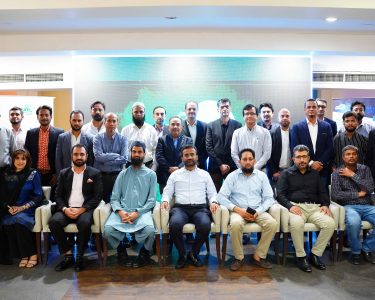In the ever-evolving landscape of technology, artificial intelligence (AI) has become “AI Unicorns” the crown jewel that every major tech giant wants to possess. But instead of the traditional route of acquiring entire companies, giants like Google, Microsoft, and Amazon have found a more covert way to dominate the AI space—by raiding AI startups for their top talent.
Big Tech’s New Acquisition Strategy: Talent, Not Companies
In the past, when a tech company spotted a startup with groundbreaking technology, the next logical step was an acquisition. This trend has shifted dramatically in recent years. Instead of buying out startups, big players are luring away their top minds, leaving the companies vulnerable and often forcing them into an eventual sale or collapse. This sneaky strategy allows tech giants to acquire the innovation and expertise they need without the hefty price tags or the regulatory scrutiny that comes with buying entire companies.

Why AI Talent Is the New Gold
AI is arguably the most transformative technology of our time. From self-driving cars to personalized shopping experiences, AI’s applications are limitless. As a result, the demand for top-tier AI talent has skyrocketed. Startups, often hailed as the breeding grounds for innovation, are the primary sources of this talent. These small, agile companies attract the brightest minds who thrive in environments where they can experiment and push boundaries.
However, the very thing that makes these startups attractive—cutting-edge talent—also makes them targets for larger companies. The tech giants are offering irresistible compensation packages, career opportunities, and resources that small startups simply cannot match. As a result, key engineers, data scientists, and AI researchers are being poached at an alarming rate.
The Domino Effect on AI Startups
When a startup loses its top talent, it often sets off a domino effect. The remaining team members may feel demoralized, and the startup’s innovation pipeline can grind to a halt. Investors may lose confidence, leading to decreased funding and support. Over time, the startup may become a shadow of its former self, making it an easy target for a buyout or, in some cases, forcing it to shut down entirely.
This strategy is not only cost-effective for the tech giants but also significantly reduces the risk of antitrust concerns. By acquiring talent instead of entire companies, big tech firms avoid the regulatory hurdles that have become increasingly stringent in recent years. This method allows them to continue growing their AI capabilities without drawing too much attention from regulators.
Google, Microsoft, and Amazon: The Biggest Players in the Game
Google, Microsoft, and Amazon are leading the charge in this talent acquisition strategy. Each company has its unique approach, but the end goal is the same—dominate the AI space.
- Google has long been known for its aggressive hiring practices. The company offers AI talent not just competitive salaries, but also unparalleled resources and the opportunity to work on projects that impact billions of people worldwide. Google’s focus on AI-driven products like Google Assistant and its advancements in natural language processing are direct results of its talent acquisition strategy.
- Microsoft has taken a more collaborative approach. The company has been forming partnerships with AI startups, offering them access to Microsoft’s vast ecosystem in exchange for talent and technology. This symbiotic relationship allows Microsoft to integrate innovative AI solutions into its existing products while providing startups with the support they need to scale. However, once these partnerships are in place, it’s not uncommon for key startup personnel to transition into full-time roles at Microsoft.
- Amazon has been leveraging its vast data infrastructure to attract AI talent. The promise of working with one of the world’s largest datasets is a huge draw for data scientists and AI researchers. Amazon Web Services (AWS) also plays a significant role, offering startups the tools they need to build and scale AI solutions. Over time, many of these startups find their top talent transitioning to roles within Amazon, further strengthening the tech giant’s AI capabilities.
The Ethical Dilemma
While this strategy is undeniably effective, it raises ethical questions. Is it fair for big tech companies to cherry-pick the best talent from startups, knowing full well the impact it will have on the smaller company’s survival? On one hand, it’s a natural progression in a competitive industry. On the other, it could be seen as a predatory practice that stifles innovation in the long term by eroding the very companies that drive it.
Furthermore, this trend could lead to a consolidation of power among a few major players, limiting diversity and competition in the AI space. As these tech giants continue to grow their AI empires, smaller companies may struggle to find a foothold, ultimately leading to a less dynamic and innovative industry.
The Future of AI Innovation
The current landscape suggests that big tech’s strategy of acquiring talent instead of companies is here to stay. As AI continues to permeate every aspect of our lives, the race to secure the best minds in the field will only intensify. Startups will need to find new ways to retain their talent, whether through better compensation, more compelling missions, or stronger partnerships with larger companies that do not involve losing their key personnel.
In the end, the way AI innovation unfolds will largely depend on the balance between the power of big tech and the resilience of startups. Both sides have their roles to play in driving the next wave of technological advancements, but the question remains—will the startups be able to survive the onslaught of talent poaching, or will they be absorbed into the monolithic structures of big tech?
For more insights on the latest developments in the tech world, visit Digital Digest.




